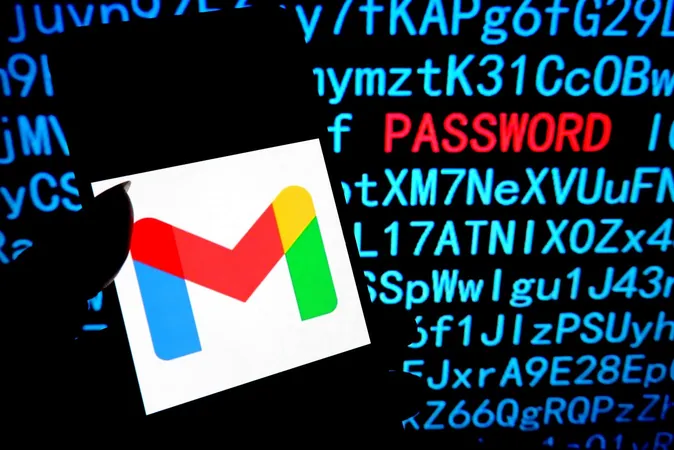
Major Changes to Gmail's Password Policy Start Today: Here’s What You Need to Know!
2024-09-30
Author: Ying
Major Changes to Gmail's Password Policy Start Today: Here’s What You Need to Know!
As of September 30, 2024, Gmail users will encounter new password security protocols aimed at enhancing the safety of the widely used email service. In a decisive move, Google is discontinuing support for access to Gmail accounts from applications deemed "less secure" – this includes third-party apps and devices protected solely by traditional username and password logins. Here’s everything you need to be aware of to ensure uninterrupted access.
Wave Goodbye to Google Sync and Outdated App Access
If you’ve been following Google's security updates, you would know that this transition has been on the horizon for quite some time. The tech giant has been ramping up its security measures, ranging from the introduction of passkeys for Chrome across various platforms—including Windows, macOS, Linux, and Android—to implementing advanced cryptographic techniques to thwart potential cyber threats. Google had initially announced this significant shift a year ago, emphasizing the urgency to replace conventional login methods and minimize the risks of breaches.
From today, Google Workspace customers must utilize OAuth, a far more secure authentication protocol, for app access to their Gmail data. The older password-based sign-in options for CalDAV, CardDAV, IMAP, POP, and Google Sync will no longer be available, pushing users towards a more robust security framework.
Who Will Be Affected by These Changes?
The new security rules apply specifically to Google Workspace users; however, personal Gmail accounts will remain unaffected. While personal users can still access IMAP, they’ll lose the ability to toggle certain settings from their account options. Meanwhile, Workspace users should take the following actions to avoid frustrating error messages when logging in.
1. For Outlook versions 2016 or earlier, it is imperative to upgrade to Microsoft 365 or use the latest versions of Outlook for Windows or Mac.
2. If you use Thunderbird or other email clients, you’ll need to re-add your Google account and configure it to utilize IMAP via OAuth.
3. For those on iOS or macOS Mail, it’s crucial to sign in using Google’s official option to enable OAuth, which involves removing your account and then re-adding it.
The Need for Enhanced Cybersecurity Awareness
Recent research from Yubico, a leader in hardware security keys, highlights the crucial nature of Google's policy shift. The Global State of Authentication survey, which included 20,000 respondents from the U.S. and U.K., revealed alarming trends. More than half of those surveyed still rely on traditional username and password combinations, with a concerning number believing that this remains a secure method of authentication.
The survey found that 40% of users feel that the apps and services they depend on aren't doing enough to protect their data. Even more startling? Approximately 22% have never conducted any personal cybersecurity assessments to identify potential vulnerabilities.
As these new regulations come into force, it’s clear that both individual users and organizations must proactively engage in enhancing their cybersecurity practices. Ignoring these updates could potentially expose your sensitive data to serious risks.
Stay informed and take the necessary steps to adapt to these changes—your email security could depend on it!




 Brasil (PT)
Brasil (PT)
 Canada (EN)
Canada (EN)
 Chile (ES)
Chile (ES)
 España (ES)
España (ES)
 France (FR)
France (FR)
 Hong Kong (EN)
Hong Kong (EN)
 Italia (IT)
Italia (IT)
 日本 (JA)
日本 (JA)
 Magyarország (HU)
Magyarország (HU)
 Norge (NO)
Norge (NO)
 Polska (PL)
Polska (PL)
 Schweiz (DE)
Schweiz (DE)
 Singapore (EN)
Singapore (EN)
 Sverige (SV)
Sverige (SV)
 Suomi (FI)
Suomi (FI)
 Türkiye (TR)
Türkiye (TR)